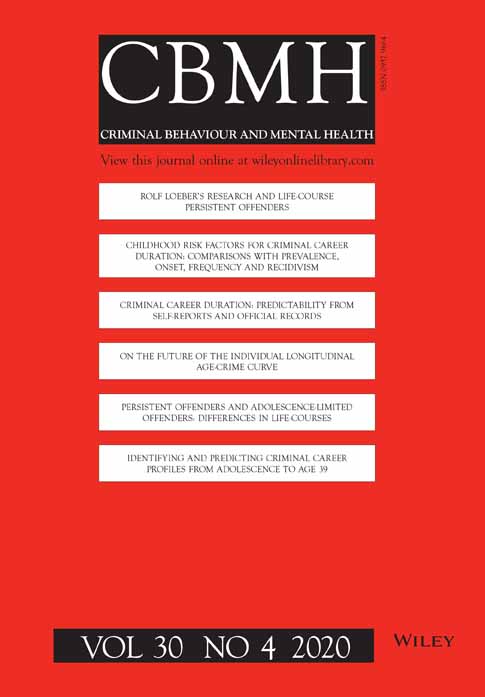On the future of the individual longitudinal age-crime curve
Abstract
Background
This article serves as our memorial for the outstanding contribution of Rolf Loeber to developmental criminology. His salient paper on the future of the study of the age-crime curve (2012) is the focal point.
Aims
Follow some research trails that Rolf Loeber proposed in his 2012 paper.
Methods
Recent data on official offending from the Montréal Two Samples Four Generations Cross-sectional and Longitudinal Studies (MTSFGCLS) are analysed. The data were gathered for two generations of juvenile court males; five birth cohorts born around 1960 and followed from age 8 to 61, and five birth cohorts born around 1980, males and females traced from age 12 to 45. The age-crime curves are presented for the total prevalence. Epidemiological data are displayed for career descriptors: number of years active in offending, frequency, variety, onset, offset and duration.
Results
The age-crime curves of the two generations display the habitual shape reported in the literature. The epidemiological data shows that the population sample has a much lower curve in comparison to the court sample; this sort of difference is also observed between females and males.
Conclusion
The difference between the two generations in the age-crime curves are interpreted in light of three evolutions in Québec from 1960 to 2000: (a) a radical change in the delinquency law, social and criminal justice policies, and treatment for juvenile delinquents; (b) a reduction of the juvenile and adult crime rates; (c) a significant increase in the wellbeing of the population on education, health and welfare services.
Open Research
DATA AVAILABILITY STATEMENT
The data that support the findings of this study are available on request from the corresponding author. The data are not publicly available due to privacy or ethical restrictions.




